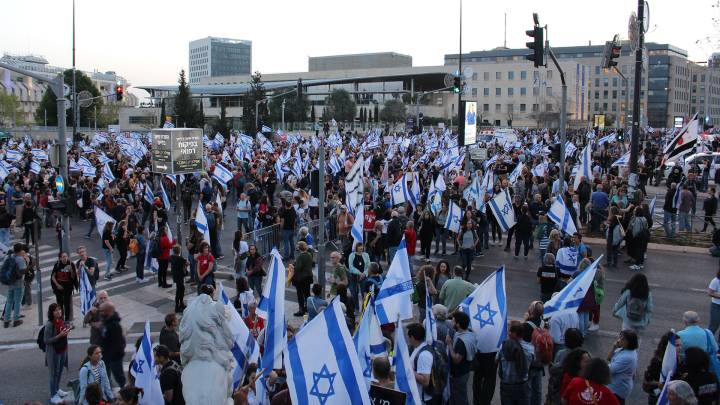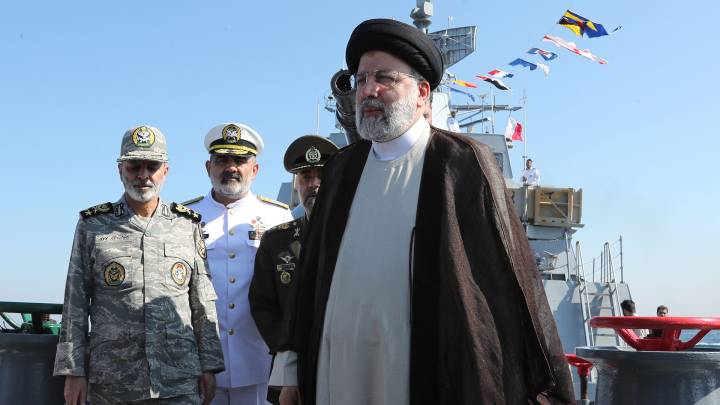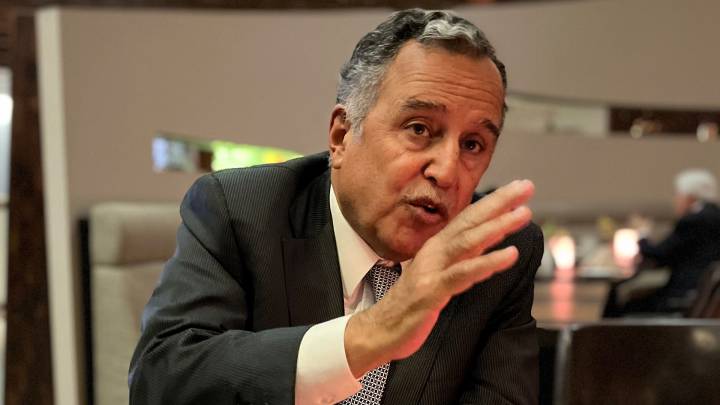What the hostage exchange between Israel and Hamas means - and why both sides are using the deal as a pretext.
The ceasefire agreement between Israel and Hamas in Gaza consists of three successive phases. The first phase lasted 42 days and began on January 19th. It provides for a temporary cessation of all military operations. It also includes the release of 33 Israeli hostages in exchange for Palestinian prisoners. So far, around 90 imprisoned women and children have been released.
The first phase also provides for improved access for aid supplies to the Gaza Strip and the withdrawal of Israeli forces from densely populated areas and the Netzarim and Philadelphia corridors. The return of displaced Palestinians to the southern part of the Gaza Strip under the supervision of Egypt and Qatar should also be made possible.
The key question remains, however, whether Prime Minister Benjamin Netanyahu actually intends to complete the second phase
Negotiations for the second phase are to begin in parallel. This provides for the release of the remaining Israeli hostages in exchange for a further number of Palestinian prisoners and a complete withdrawal of the Israeli military from the Gaza Strip. The third phase provides for the return of human remains, the start of implementation of the reconstruction plan, the opening of border crossings and the facilitation of the transfer of people and goods.
The text of the agreement stipulates a temporary cessation of all military operations on both sides for the first phase and a daily halt to reconnaissance and air force flights for ten hours. On days when prisoner exchanges are to take place, this period is scheduled to be extended to twelve hours.
The key question remains, however, whether Prime Minister Benjamin Netanyahu actually intends to complete the second phase, as Interior Minister Itamar Ben Gvir and Finance Minister Bezalel Smotrich have already announced their withdrawal from the government should that happen. It is not yet clear whether the pressure from within the cabinet or from outside has a greater effect to sway Netanyahu’s decisions. In any case, the initiative of Trump envoy Steve Witkoff, which made the current deal possible, is likely to remain a flash in the pan, driven primarily by the momentum surrounding the transition in the White House. Many observers assume that Trump has already pledged his support to Netanyahu should Israel decide to continue the war and break the agreed ceasefire after or during the second phase.
Looking at the other side of deal, the hostages are completely absent from Hamas' public statements in response to the ceasefire
If the Israeli government is really serious about ending the conflict permanently and bringing back all hostages, why has it not agreed on a comprehensive deal that does not include individual phases, but pursues exactly the same goals? Why risk endangering the lives of the hostages when they can be saved? In a commentary in response to the agreement, Haaretz journalist Zvi Barel argues that the Netanyahu government does not intend to prolong the agreement to a second phase and will be satisfied with the return of 33 rescued hostages, as they would interpret the fate of the remaining hostages as collateral damage. In previous meeting with the hostages' relatives, the Prime Minister has explicitly not committed to implementing all phases.
Looking at the other side of deal, the hostages are completely absent from Hamas' public statements in response to the ceasefire. “The incredible military and security leadership of the Al-Qassam Brigades on October 7, 2023 will remain the pride of our resistance and will be passed on from generation to generation,” announced Khalil Hayya, deputy chairman of the Hamas Political Bureau, in an interview with Qatari broadcaster Al-Araby. The ceasefire and the commitment to peace play practically no role in the statements made by Hamas officials.
Overall, the civilian population and their humanitarian situation are not mentioned, nor are their wishes for the future in Gaza. Rather, the aim is not to appear as a militarily defeated party to the deal, grasping at the last straw. Instead, Hamas's martial rhetoric is signalling that it is already preparing for the next round of fighting. “This war will not end with this battle: our people will defeat the occupation, including in Jerusalem and the holy sites - soon, God willing,” Hayya concluded his monologue on Qatari television last week.




